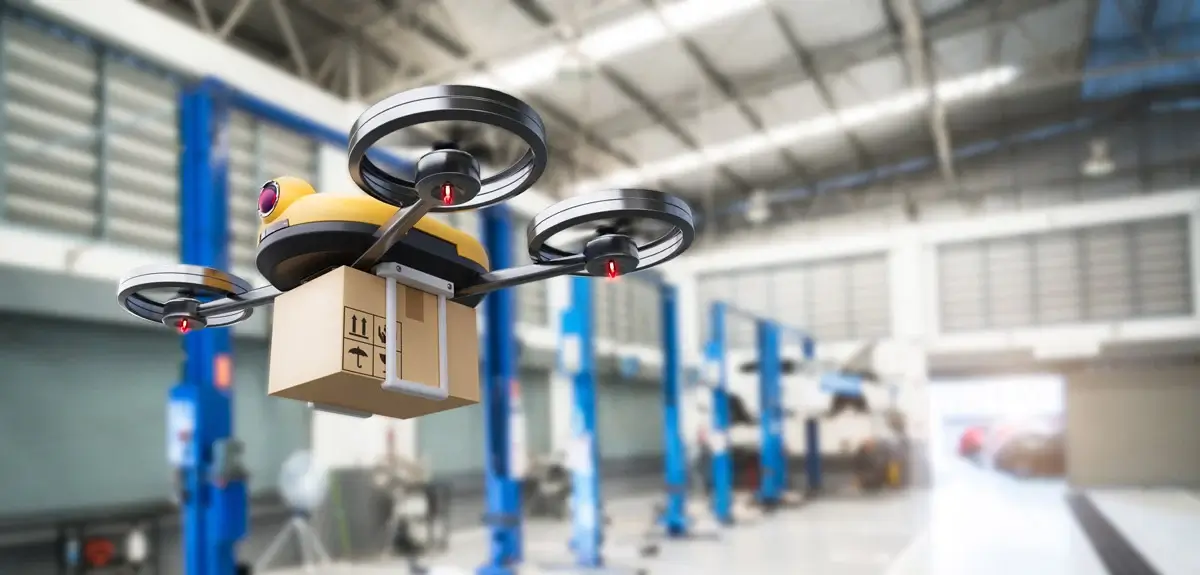Imagine a completely automated supply chain where processes combine with technology solutions to deliver products without any human intervention. A consumer places an order, the order is transmitted to 3D printers that print the final product using additive manufacturing processes. The completed order is then retrieved by a robot and packaged ready to be placed onto a self-driving truck. The truck leaves the production plant and drones are dispatched through a rolltop roof to deliver the products while the truck is in motion.
This particular scenario is not a reality yet, but it’s coming. Supply chain automation is gaining ground, especially in warehousing and last-mile logistics. The use of advanced robotics, the application of the Internet of Things and the introduction of big data analytics in supply chain management is transforming and streamlining what were previously complex manual processes, and bringing complete visibility and control to every part of the supply chain.
The challenge of change
Companies across every industry are feeling increasing pressure to reduce logistical expenditure and delivery times while also enhancing efficiency and accuracy. There is also a continuous need to enhance the customer experience. As a result, businesses and organisations are adopting efficient, agile ways to produce, manage and handle goods, leveraging new technology solutions such as automation, digitisation and analytics. These intelligent solutions don’t replace the human workforce, but augment it, helping to ensure that accurate, data-based decisions and processes happen faster.
However, the challenge of change on such a large scale can be daunting. There are many concerns and questions that may keep a supply chain leader awake at night, but possibly the most pressing are:
- Integrating the devices and equipment required to mimic the actions of a human workforce
- Utilising data gathered from intelligence systems to deliver actionable insights
- Sourcing skilled employees who have the experience and knowledge to launch and manage AI projects
The four pillars of the automated supply chain ecosystem
There are essentially four pillars in the automation supply chain ecosystem. No matter what level of digital maturity your enterprise is at, each of these pillars is designed to help you reach the next stage of digital transformation. Artificial Intelligence (AI), Advanced Analytics and the Internet of Things (IoT) each provide the path to this transformation.
Connected: An extended digital ecosystem that connects systems, things, employees and trading partners enables complete visibility and control of the business.
Collaborative: Secure and rich collaboration that gives people, systems and things the flexibility to work when, how and where they need to.
Intelligent: Boost your competitive edge with advanced analytics solutions that automate and optimise business operations, predict outcomes and allow you to take informed action.
Secure: High-level security is essential for the automated supply chain, to ensure the right people, things and systems have access to the right information at the right time.
The value of partnership
Many supply chains are complex and global. Retailers and consumers expect and demand responsive, fast and cost-effective deliveries. Margins are tight, competition is fierce and enterprises must find new ways to rise to these challenges.
However, a supply chain cannot be automated overnight, and to overcome these challenges, enterprises should look to experienced partners.
Automate to accelerate
Intelligence and robotic process automation have the capacity to transform the entire supply chain end to end. Create networks everywhere, put sensors in everything, automate anything and analyse everything: get this right and you can significantly improve supply chain performance and customer satisfaction.


